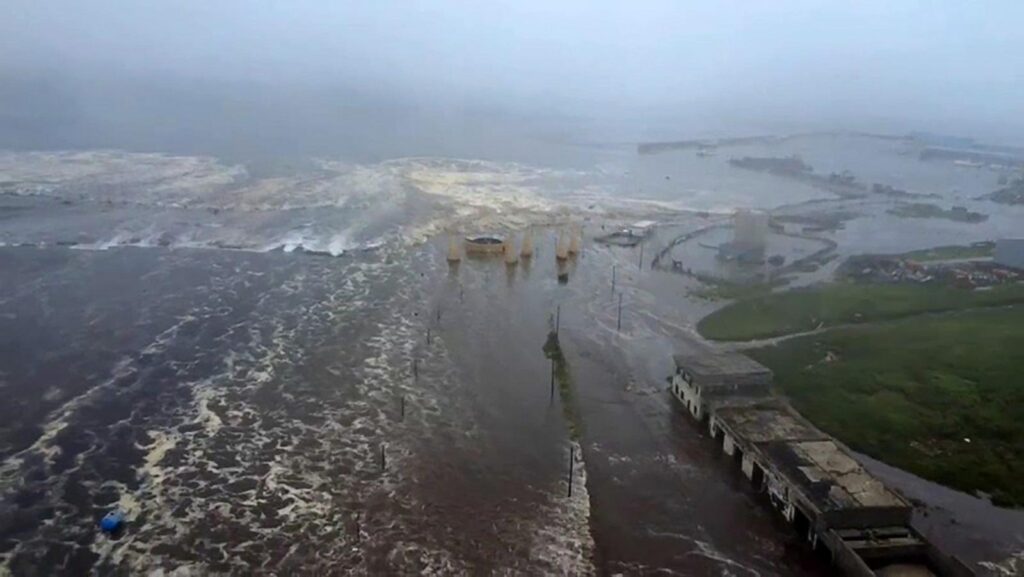
A powerful 8.8-magnitude undersea earthquake struck near Russia’s Kamchatka Peninsula on Wednesday, sparking immediate tsunami alerts across the Pacific region. Fears mounted as countries like Japan, the United States, and Russia issued evacuation orders and braced for potentially catastrophic waves. However, to the surprise of many, the tsunami that followed turned out to be significantly less destructive than expected, with most areas reporting waves no higher than 3 to 4 feet.
Only Kamchatka itself experienced wave heights of 14 to 16 feet, while elsewhere the impact was far milder. So, what explains this relatively modest outcome from such a high-magnitude quake?
A Powerful Quake, Yet a Mild Tsunami
The earthquake struck at 11:24 a.m. local time beneath the seabed off the Kamchatka Peninsula. Its magnitude — a massive 8.8 — immediately raised red flags. Historically, such powerful quakes beneath the ocean floor have triggered devastating tsunamis. For example:
The 2004 Indian Ocean tsunami, caused by a 9.1-magnitude quake, killed over 230,000 people across multiple countries.
The 2011 Japan tsunami, triggered by a 9.0-magnitude earthquake, led to the Fukushima nuclear disaster and claimed over 18,000 lives.
Given these precedents, warnings were swiftly issued across the Pacific Rim, including Japan, Hawaii, California, and Peru. Coastal areas were cleared, emergency services deployed, and residents moved to higher ground.
So, Why Was This Tsunami So Weak?
According to scientists, several key factors influence the strength of a tsunami beyond just the earthquake’s magnitude:
1. Type of Seafloor Movement:Not all powerful earthquakes generate tsunamis. The most dangerous ones involve vertical displacement of the ocean floor, where one tectonic plate thrusts upward or downward, suddenly displacing a large volume of water.Preliminary data suggests Wednesday’s quake may have involved more horizontal or oblique movement, which causes less water displacement — and therefore, a smaller tsunami.
2. Depth and Location of the Quake:The depth of the earthquake and its exact epicenter location are also critical. If the quake occurs deeper beneath the seabed, much of its energy is absorbed before reaching the surface.Additionally, offshore geography — including ocean depth and the shape of the continental shelf — can disperse wave energy, reducing the tsunami’s height by the time it reaches distant shores.
3. Geological Features:The bathymetry (underwater topography) of the Pacific Ocean also plays a role in how tsunami energy spreads. Narrow bays or coastal inlets, like those in Japan or Alaska, tend to amplify wave heights, while broad coastlines like California can disperse the energy more evenly.
Widespread Warnings, Minimal Impact
Despite initial fears and precautionary evacuations, countries such as Japan and the United States experienced only minor wave surges. In Hawaii, waves barely exceeded four feet, and in California, some regions saw wave heights up to eight feet, but no significant damage was reported.
Tsunami alerts were lifted within hours as it became clear that the worst-case scenarios had not materialized. Evacuated residents in Japan, Hawaii, and parts of Russia safely returned home.
A Close Call With Lessons Learned
This event serves as a critical reminder of the unpredictable nature of undersea earthquakes and tsunamis. While the 8.8 magnitude of the Kamchatka quake was alarming, the geological dynamics behind it prevented a major disaster. It also highlights the importance of early warning systems, which enabled rapid evacuations and likely helped prevent injuries or fatalities.
Scientists continue to analyze the quake to better understand its unique characteristics and improve tsunami forecasting models in the future.
